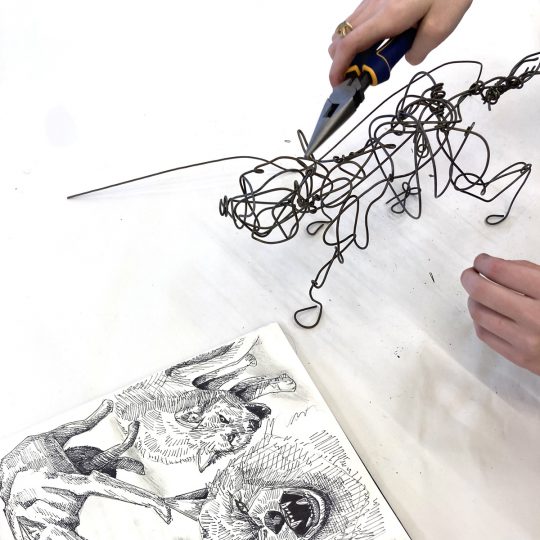
Consider it a Visual Dialogue
Your portfolio is an opportunity to narrate your artistic story.
Often, it’s the first encounter a school has with you, preceding the perusal of your written submissions or face-to-face conversations.
In essence, your portfolio is a game-changer.
It serves as your inaugural statement, a chance to present the very best version of yourself. As you envision the art school of your dreams, what lasting impression do you wish to imprint?
Presumably, you aim to convey strength, capability, professionalism and a profound dedication to the world of art. The question then becomes: How do you curate a portfolio that communicates precisely that? The devil is in the details.
Showcasing Your Prowess
Art schools seek evidence of current skills and the future potential of a student. Hence, consider incorporating a diverse array of techniques, mediums and works that illuminate your creative processes.
Certain institutions may have specific content and technical criteria, so it’s crucial to consult the admissions department beforehand to ensure adherence to submission guidelines.
Highlighting Your Skills
Portfolio review committees typically gravitate toward submissions that reflect a mastery of fundamental artistic concepts, such as:
- Composition: The strategic arrangement of elements in a work.
- Drawing: Proficiency in line weights, mark-making, proportion, and medium.
- Design: Achieving overall unity through the combination of art elements and design principles.
- Value: Grasping the relative darkness or lightness of a color.
- Spatial Perception: A nuanced understanding of spatial relationships and the hierarchy of foreground, middle and background.
- Technique: Skillfulness in employing fundamental methods.
- Color Perception: Demonstrating sensitivity to color with sophistication in its application.
- Originality: Exhibiting the capacity for independent thought and the transformation of the predictable into something new and original.
- Conceptual Awareness: Expressing a clear idea and effectively using materials and processes to fortify the concept.
- Aesthetic Awareness: Guided by the principles of artistic beauty and taste.
Crafting Portfolios for the Modern Era
While maintaining a physical portfolio is beneficial for impromptu showcases, the majority of schools prefer digital portfolios during the admissions process.
Consider the following:
- Opt for 10-20 images of your recent work.
- Include only high-resolution, quality images.
- Provide detailed descriptions and, if possible, stories accompanying your work.
